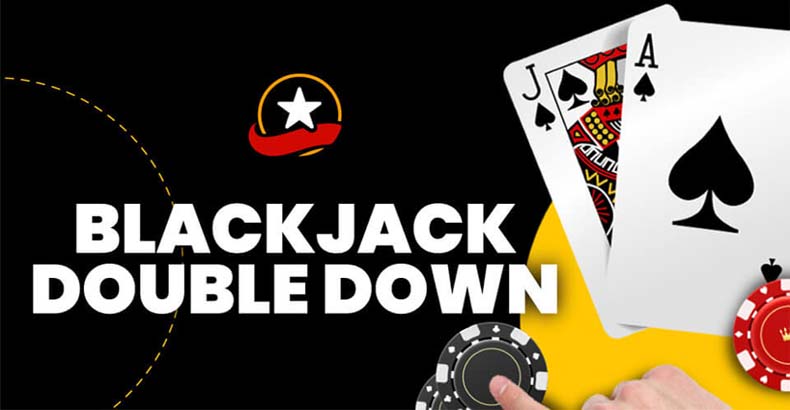What does Double Down Mean in Blackjack
Blackjack is one of the most popular game in the casino and it’s popularity among the people are increasing as the time passes by. It is very easy to learn how one can play blackjack and bet. Before learning about the double down in blackjack, let’s understand what Blackjack Means.
A Blackjack is a casino games which is played with the deck of 52 cards. It is the most played casino game in the world. It is a simple and fast paced game which sees the player off against their opponent to get the score of 21 or as close to it wins the game. You have to do this by combining the set of cards you have in your hands that you are dealing with. Now this can be done with the Ace card and one of the other cards whose value is 10. These cards are – Ten, Jack, Queen and King.
What is Double Down In Blackjack?
Now coming to the Double Down, It is a kind of strategy in the Blackjack which can be used to bet. When you have the option to “double down” in the game of blackjack, you can increase your initial wager by up to 100%. After taking one more card, the player must stand in return.
Doubling down is a declaration of confidence in your hand, and there are three circumstances in which it is probability wise to do so when playing online blackjack. It’s risky because you can’t hit again and could lose twice as many chips if you’re dealt a bad card.
It’s crucial to understand when to double down when playing blackjack. It all comes down to striking the correct balance between being safe and taking a chance while making sure you have an advantage.
When You Should Double Down At Blackjack?
The only time you can double down in a game of blackjack is immediately following the distribution of your initial two cards.
There are currently three sets of hands in which you ought to raise your initial wager. You cannot lose in any of them and have a higher chance of winning the hand than the dealer.
1. The face-up card of the dealer is two-six, and you have a hard nine (inclusive).
A hand of two cards known as a “hard nine” consists of two cards that sum up to nine without an ace, such as 2 and 7, 3 and 6, or 4 and 5.
2. The dealer’s face-up card is lower and you have a hard 10 or 11.
Probability is on your side if the dealer’s card is lower than yours and your first two cards are 2 and 8, 2 and 9, 3 and 7, 3 and 8, 4 and 6, 4 and 7, 5 and 5, or 5 and 6.
Go all in. Although you cannot go bust, the dealer runs the danger of exceeding 21 because they must hit till they reach 17.
3. Your face-up card is a soft 16, 17, or 18, and the dealer’s card is a two-six (inclusive).
When You Should Not Double Down At Blackjack?
Never double down when you have a hand greater than an 11, as the likelihood of losing the entire bet is too great. It is preferable to just hit or stay with a smaller total and then wait for the dealer to lose money. Basically, if you ever have a doubt about whether to double down, go with the safe choice and leave your wager alone.
If the dealer is having an Ace, then you should not double down. When playing blackjack, an ace is a really potent card to have in your hand, which is precisely why you shouldn’t double down if the dealer is showing one! Either a blackjack or a score that is very close to 21 are likely outcomes.
Some Tips While Doubling Down
- When you’re ready to take a chance, just place a stack of chips equal to your initial bet next to your current bet to indicate that you’re going double down. Do not add additional chips on top of the original wager since this may be interpreted as changing the bet. Keep in mind that you must always stake the same amount when you double down.
- Most players, especially those who are new to blackjack, should nearly always double down when they have an 11.
- Normally, after splitting, you won’t be able to wager again. When you are dealt two identical cards, you have the option of splitting them into two separate hands and asking the dealer to deal you two additional cards. While most physical casinos won’t, some internet casinos might.
- After a hit, you cannot double down. To take another card, strike.A player cannot double down until the first two cards have been dealt.


